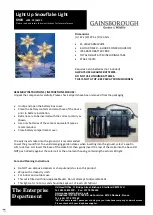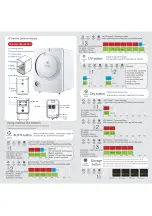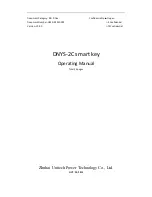
85053B 3-5
Use, Maintenance, and Care of the Devices
Cleaning Connectors
Cleaning Connectors
1. Use Compressed Air or Nitrogen
Clean connectors are essential for ensuring the integrity of RF and
microwave coaxial connections.
Use compressed air (or nitrogen) to loosen particles on the connector
mating plane surfaces.
You can use any source of clean, dry, low-pressure compressed air or
nitrogen that has an effective oil-vapor filter and liquid condensation trap
placed just before the outlet hose.
Ground the hose nozzle to prevent electrostatic discharge, and set the air
pressure to less than 414 kPa (60 psi) to control the velocity of the air
stream. High-velocity streams of compressed air can cause electrostatic
effects when directed into a connector. These electrostatic effects can
damage the device. Refer to
“Electrostatic Discharge” on page 1
additional information.
2. Clean the Connector Threads
Use a lint-free swab or cleaning cloth moistened with isopropyl alcohol to
remove any dirt or stubborn contaminants on a connector that cannot be
removed with compressed air or nitrogen. Refer to
for
a part number for cleaning swabs.
a.
Apply a small amount of isopropyl alcohol to a lint-free cleaning
swab.
b.
Clean the connector threads.
Always use protective eyewear when using compressed air or
nitrogen.
Keep isopropyl alcohol away from heat, sparks, and flame. Store in a
tightly closed container. It is extremely flammable. In case of fire,
use alcohol foam, dry chemical, or carbon dioxide; water may be
ineffective.
Use isopropyl alcohol with adequate ventilation and avoid contact
with eyes, skin, and clothing. It causes skin irritation, may cause eye
damage, and is harmful if swallowed or inhaled. It may be harmful if
absorbed through the skin. Wash thoroughly after handling.
In case of spill, soak up with sand or earth. Flush spill area with
water.
Dispose of isopropyl alcohol in accordance with all applicable
federal, state, and local environmental regulations.
Summary of Contents for 85053B
Page 1: ...User s and Service Guide 3 5 mm Verification Kit Keysight 85053B ...
Page 10: ...1 6 85053B General Information Preventive Maintenance 1 ...
Page 38: ...3 22 85053B Use Maintenance and Care of the Devices Handling and Storage 3 ...
Page 42: ...5 2 85053B Troubleshooting Troubleshooting Process 5 Figure 5 1 Troubleshooting Flowchart ...
Page 50: ...6 6 85053B Replaceable Parts Replaceable Parts 6 Figure 6 1 Component Identification Sheet ...
Page 56: ...85053 90028 Index Index 6 ...
















































